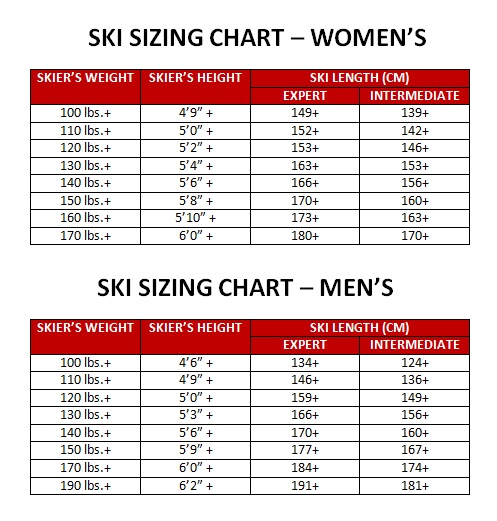Choosing the Perfect Downhill Ski Length: A Comprehensive Guide
Are you hitting the slopes this winter? One of the most crucial decisions for any skier, whether beginner or seasoned pro, is selecting the right ski length. Choosing the appropriate length can significantly impact your performance, control, and overall enjoyment on the mountain. Too short, and you'll feel unstable at high speeds; too long, and maneuvering will become a cumbersome chore. This comprehensive guide will delve into the art of selecting the perfect downhill ski length.
Determining the correct ski length isn't a one-size-fits-all approach. Several factors come into play, including your height, weight, skill level, and preferred skiing style. A taller, heavier skier will generally require a longer ski than a shorter, lighter skier. Similarly, advanced skiers who enjoy carving fast turns on groomed runs might prefer longer skis, while beginners might find shorter skis easier to control.
Historically, downhill skis were significantly longer than they are today. Early skis were often as tall as the skier, or even taller. However, advancements in ski technology, including materials and construction techniques, have led to shorter, more maneuverable skis. These modern skis offer greater control and responsiveness, allowing skiers to execute more dynamic turns and navigate varied terrain with ease. The importance of finding the right length cannot be overstated; it directly affects your ability to progress and enjoy the sport.
One of the main issues related to incorrect ski length is stability. Skis that are too short can feel unstable at higher speeds, particularly on steeper slopes or uneven terrain. This can lead to a loss of control and increase the risk of falls. Conversely, skis that are too long can be difficult to maneuver, especially for beginners or less experienced skiers. This can make turning and initiating turns challenging, hindering progression and enjoyment.
A general guideline for downhill ski length is to choose skis that fall somewhere between your chin and forehead when stood on end. However, this is a very rough estimate and should not be the sole determining factor. More precise methods involve considering your weight, skill level, and skiing style in conjunction with your height.
Choosing the correct ski length offers several benefits: improved control, enhanced performance, and increased confidence. With the right skis, you'll feel more stable and in command, allowing you to carve smoother turns and navigate challenging terrain with greater ease.
Beginners might find shorter skis easier to manage initially, while intermediate and advanced skiers can gradually increase ski length as their skills develop. Consider factors such as the type of terrain you typically ski and your preferred skiing style. If you primarily ski groomed runs, longer skis might be suitable. However, if you prefer moguls or backcountry skiing, shorter skis might be more advantageous.
To determine the right length, consult a ski size chart. Many reputable ski manufacturers provide these charts, which take into account height, weight, and skill level. You can also seek advice from experienced skiers or professionals at a ski shop. They can help you assess your needs and recommend appropriate ski lengths based on your individual characteristics and preferences.
Advantages and Disadvantages of Different Ski Lengths
| Ski Length | Advantages | Disadvantages |
|---|---|---|
| Shorter | Easier to maneuver, good for beginners and tight turns. | Less stable at high speeds, can feel "chattery" on uneven terrain. |
| Longer | More stable at high speeds, better for carving and wide turns. | More difficult to maneuver, can be challenging for beginners. |
Best Practices: 1. Consult a ski size chart. 2. Consider your skill level and skiing style. 3. Talk to a ski professional. 4. Demo different ski lengths before purchasing. 5. Don't be afraid to experiment.
FAQs: 1. How do I measure my ski length? 2. What happens if my skis are too long? 3. What happens if my skis are too short? 4. Can I use the same skis for all types of skiing? 5. Do I need different skis for different snow conditions? 6. How often should I replace my skis? 7. Can I adjust the length of my skis? 8. What is the role of ski bindings in relation to ski length?
Tips and tricks: When renting skis, don't hesitate to try different lengths. This is a great opportunity to experiment and find what feels best. Also, consider the type of terrain you'll be skiing. Powder skiing generally requires longer, wider skis than groomed runs.
Choosing the correct downhill ski length is paramount to enjoying a fulfilling and safe skiing experience. The right length enhances control, improves performance, and boosts confidence on the slopes. By carefully considering factors like height, weight, skill level, and skiing style, and by consulting resources like ski size charts and expert advice, you can find the perfect skis that match your individual needs and unlock your full skiing potential. Remember, investing time in selecting the appropriate ski length will ultimately lead to more enjoyable days on the mountain and help you progress as a skier. Don't hesitate to ask questions at your local ski shop or consult online resources to gather more information. Your perfect ski length is out there waiting for you!
.jpg)
Best Ski Poles of 2024 | Kennecott Land

What ski length should I get Choose the correct ski size | Kennecott Land

Ski Size For Kids Everything You Need To Know | Kennecott Land

What Size Skis For Toddler at Joseph Gibbs blog | Kennecott Land

How Long Should My Water Skis Be at Allen Corbo blog | Kennecott Land

Kids Ski Sizes Charts | Kennecott Land

How Long Should Childrens Skis Be at Isobel Morrison blog | Kennecott Land

how long should downhill skis be | Kennecott Land

Downhill Ski Length Chart | Kennecott Land

Ski Size Chart How To Size Skis 60 OFF | Kennecott Land

Downhill Ski Size Chart | Kennecott Land

Chart For Length Of Skis | Kennecott Land

Downhill Ski Size Chart | Kennecott Land